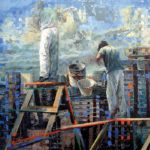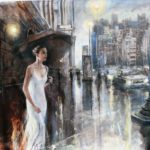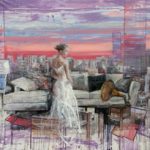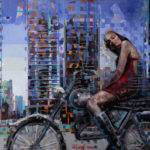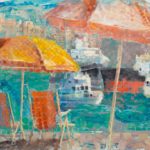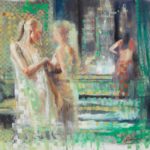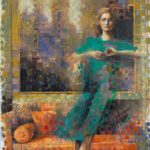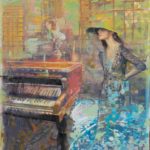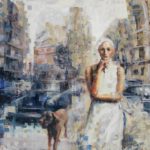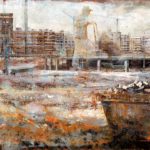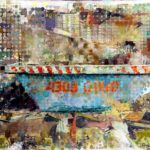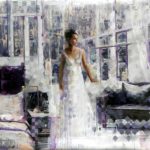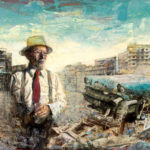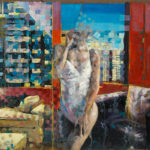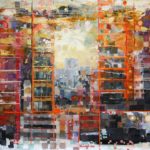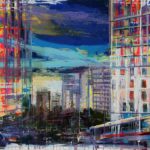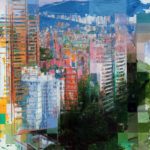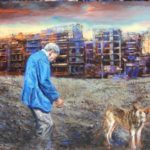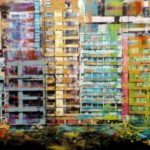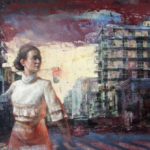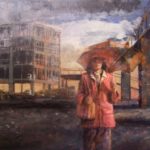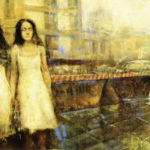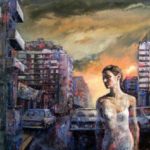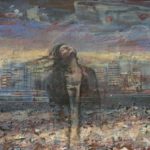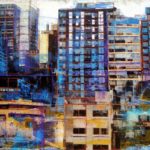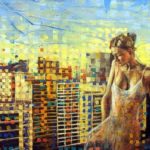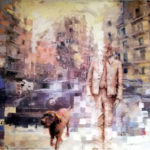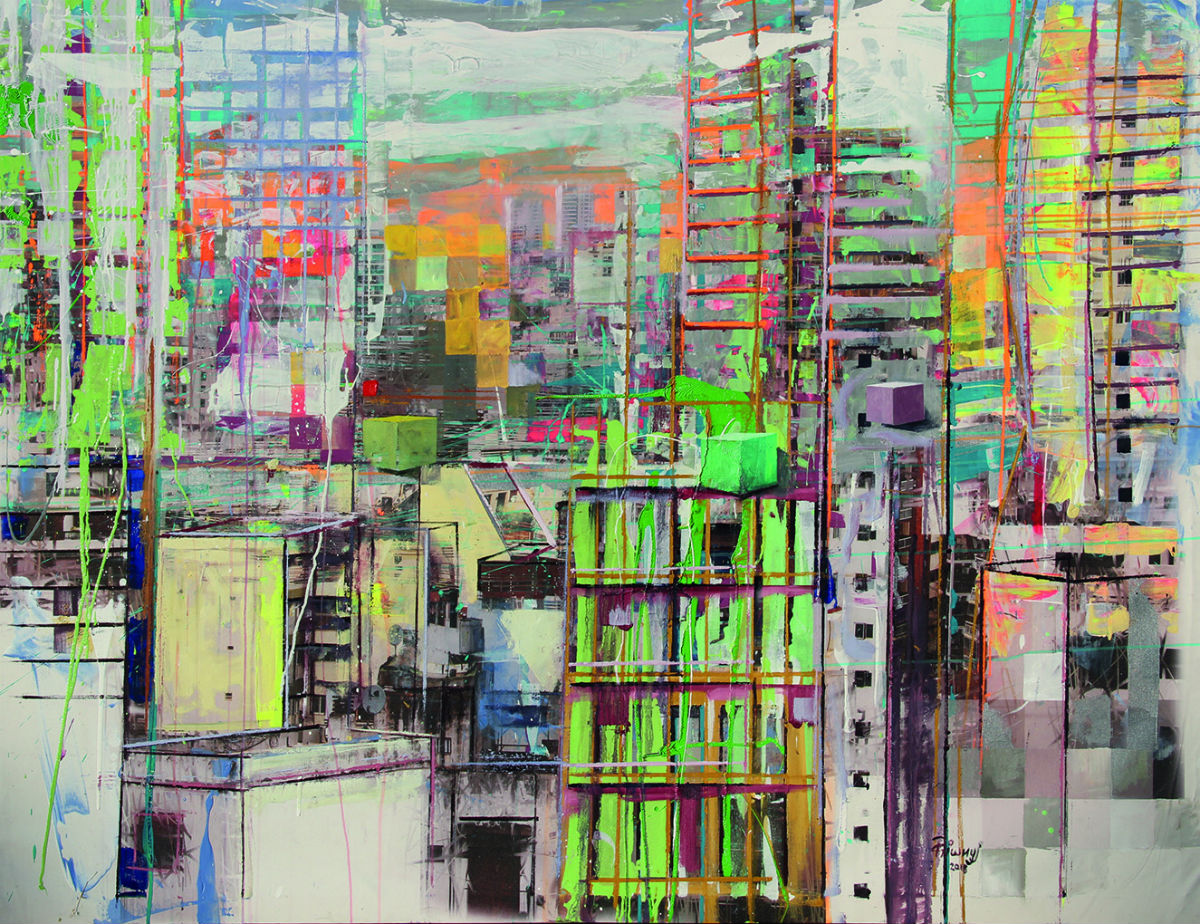
Artist Bio
Martin Riwnyj was born in Buenos Aires and has found the world to be a house with open doors for the inspiration and creation of his works. Spending his time between his native Argentina, Italy, Spain, Peru, Colombia, and Russia, he finds himself frequently visiting museums, galleries, art venues, and remote towns to expand his imagination. Although his training was classical, he quickly adopted a unique style that today distinguishes him in the world of contemporary art.
Martin’s technique is vibrant, crisp, nostalgic, precise, and skilled. Using light, color, and geometric pattern, he merges images of urban landscapes with the people and creatures that inhabit them. He creates work that transcends the commonplace.
Martin’s paintings have been exhibited internationally and are valued by collectors throughout the world.
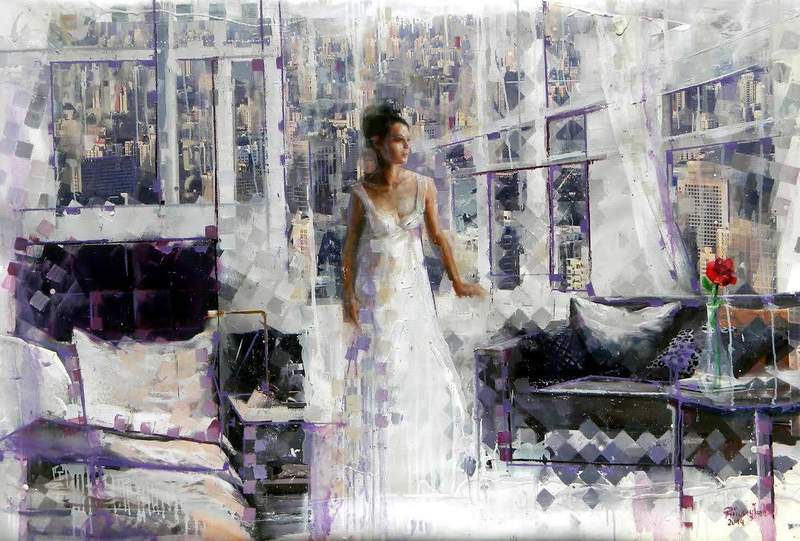
Interview
Artist: Martin Riwnyj
At what point did you decide or realize that you wanted to be a professional artist?
Actually that never happened. Since birth, from the moment I could reason, I knew I would be an artist. I painted as far as I have memory. Time went by. I took different workshops and later enrolled in the University of Beau Arts which transported me further into the universe of the arts without my even noticing it.
Then there were contests and prizes. Art galleries expressed interest in my work. I started to exhibit in various parts of the world and continue to this day. Becoming an artist was never a conscious decision; I had been swimming for some time before I realized I was even in the pool.
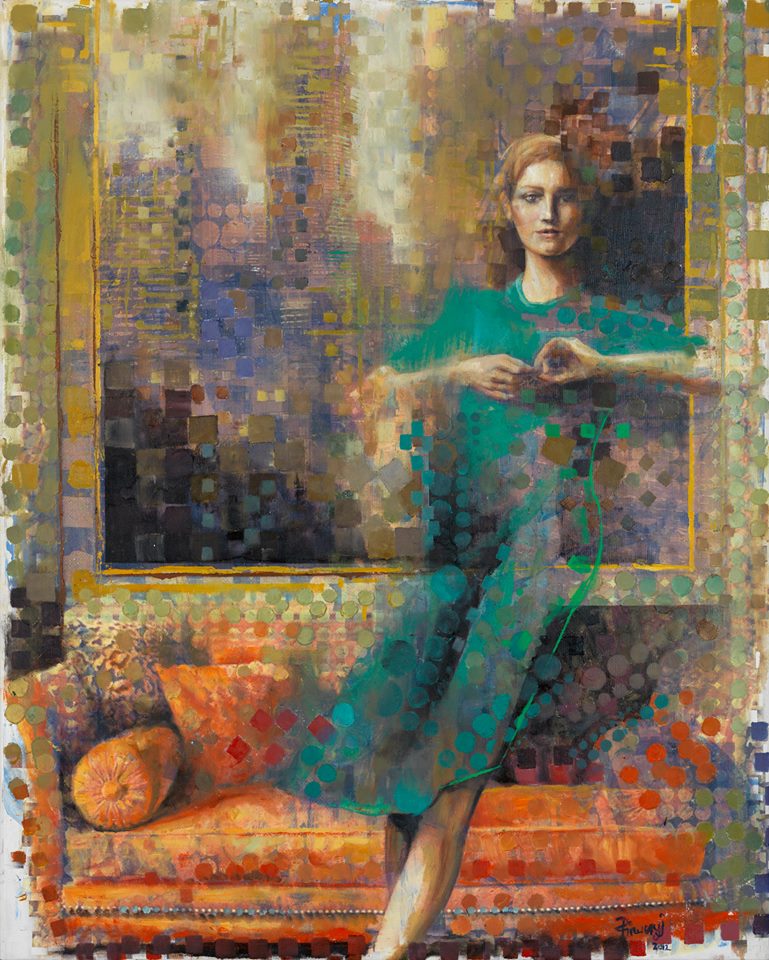
How would you describe your approach to someone unfamiliar with your work?
I come from a classical background of figurative, realistic painting. I have almost always worked with oil. Over the years I began incorporating elements of abstraction, both geometric and informalist, and adding other materials to the oil.
The thematic axis of my work is always the urban being and its surroundings. I try to reflect on human existence in the urban labyrinth. The big cities, with those infinite towers, and the characters that inhabit them, without falling into the portrait, is what I try to describe in my works.
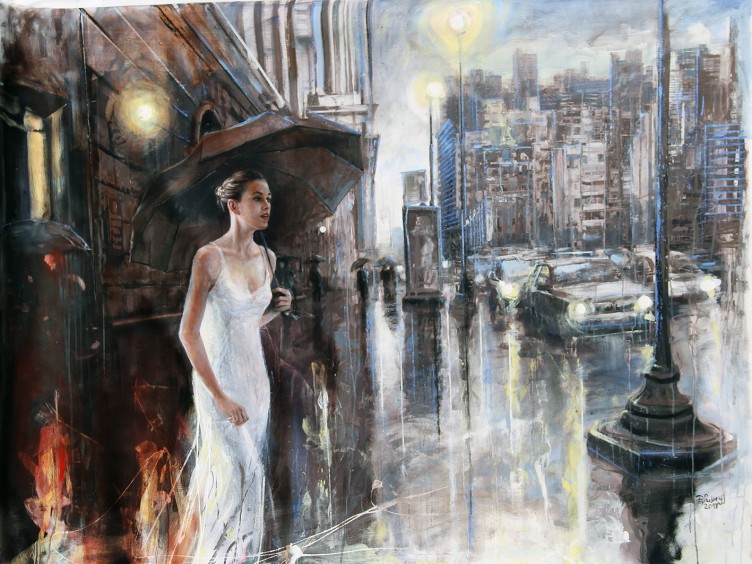
How do you choose the materials?
In my current work I use an infinite number of materials – oil, acrylic, synthetic enamel, glued papers, asphalt paint. I try to get carried away and let the material do its own work. In some cases, thanks to their incompatibility, a wealth of texture is created as when mixing water-based paint with other oilier materials.
You spend your time between Rome and Buenos Aires, cities rich in architecture and art. What attracts you to these cities and how do they nourish your work? What do you like most and least about each place?
Let’s also add Lima, Medellín, Madrid and others … they are cities that I’ve known for holding exhibitions and establishing links with the galleries. Then one gets to know people, strong and lasting bonds are created. In some ways they are cities that have adopted me. I always try to seek inspiration from them when thinking about the urban landscape. It is the most honest way to create, working from direct experience. I always have a positive vision and I get the best out of these places. Of course, I could find negative elements, for example “peak traffic” or related topics, but they are secondary issues or at least I do not pay attention to them.
What other artists in the fields of literature, painting, or music do you admire?
Phew! It would be an infinite list. But I always say that perhaps literature has influenced my work more than painting. If I had to cite someone, I would give two names: Jorge L. Borges and Julio Cortázar.
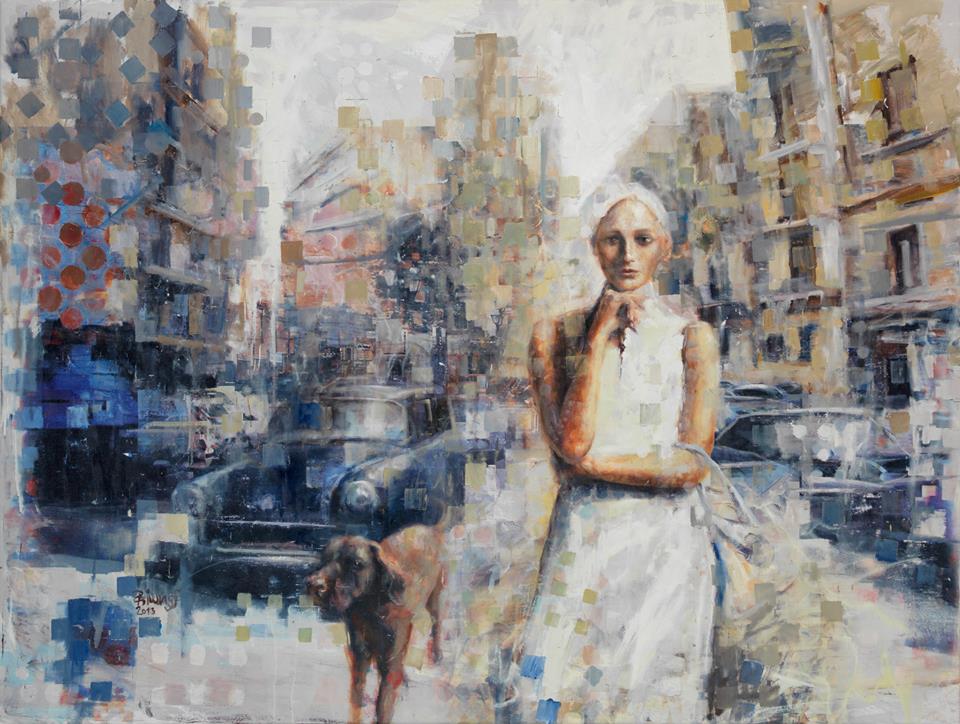
What things fascinate you and inspire you to create?
The big steel and glass towers, the cement labyrinths, the machines that run through the great gray jungle both on land and in the air. It is so natural and a daily occurrence that almost no one pays attention to the places where they live. However, I do not lose my ability for surprise. Every day I feel that I wake up in a science fiction film. I try to capture that shock and stupor in my canvases.
What obstacles do you face in making your work?
In creative terms my biggest obstacles are two: I cannot solve a picture because I went far with innovation, the desire to discover new resources, and then I fall into a stalemate, or otherwise, feel that I have solved a picture with known tools and therefore find it lacking freshness or spontaneity. The ideal result is an average between both positions. During the working day one wanders on that tightrope, being careful not to fall to one side or the other.
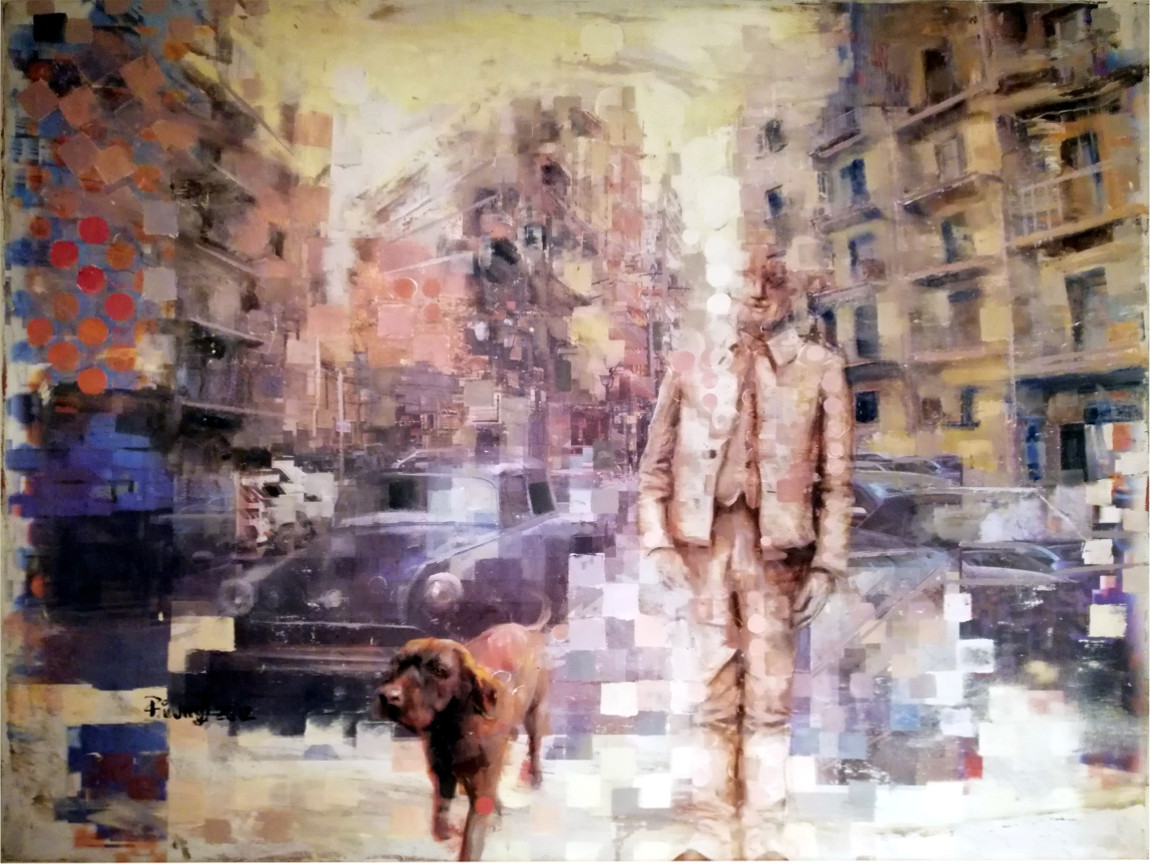
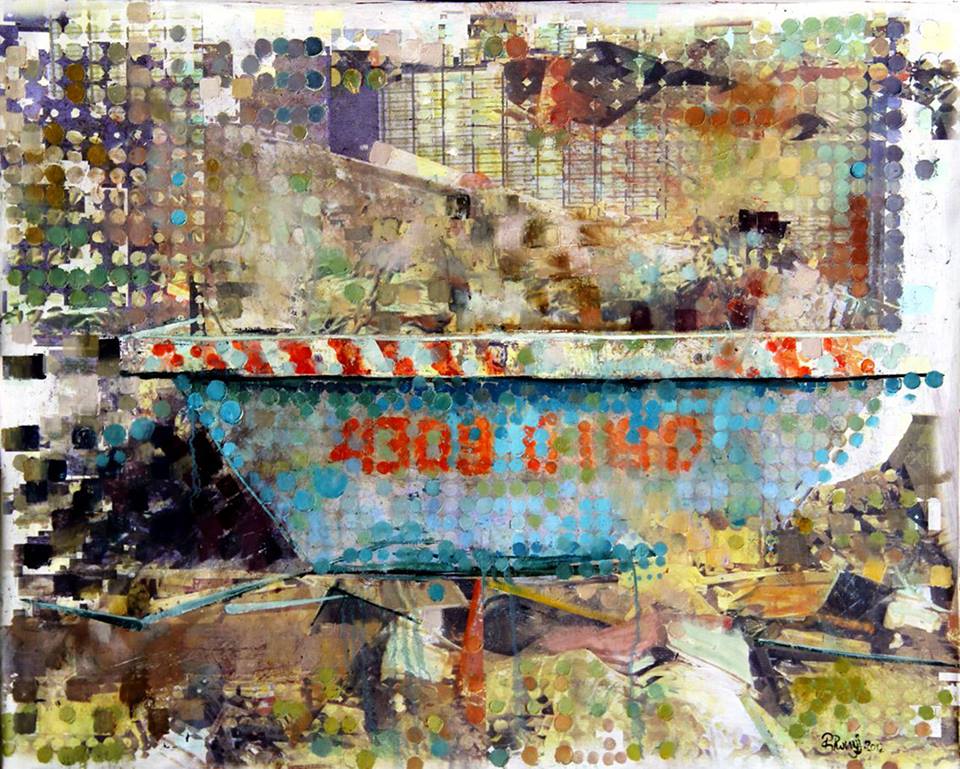
What is your artistic dream?
To be able to continue like this. Creating until the end of the days.
Favorite phrase
“El futuro llegó, hace rato.” “The future came a long time ago.”
